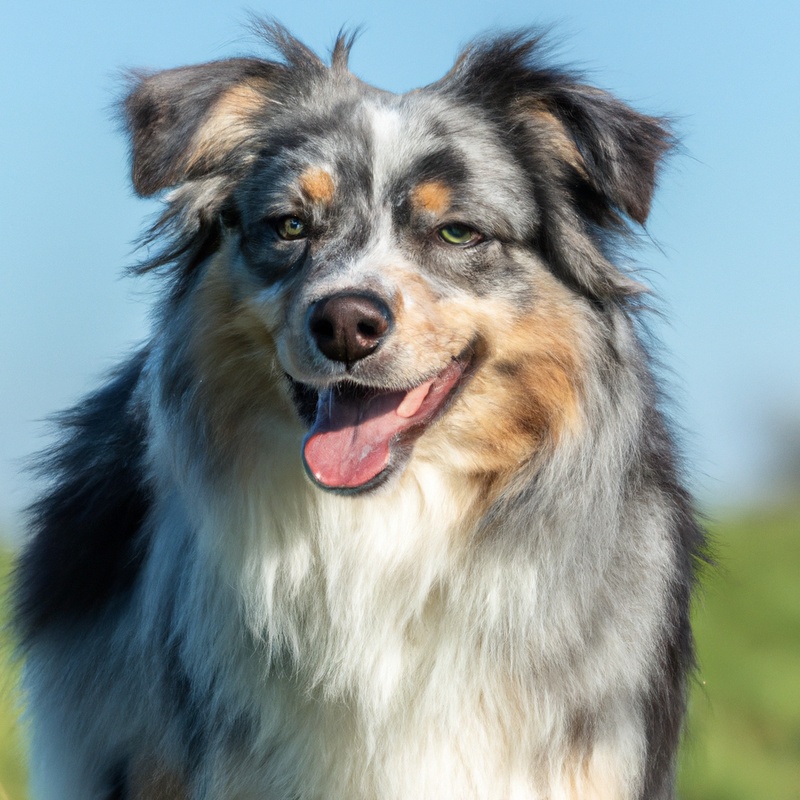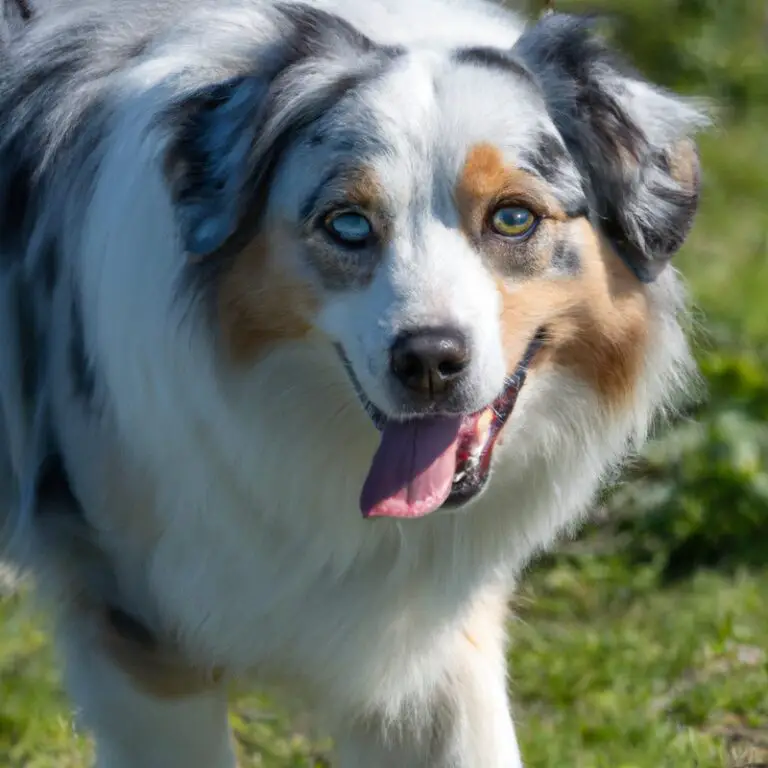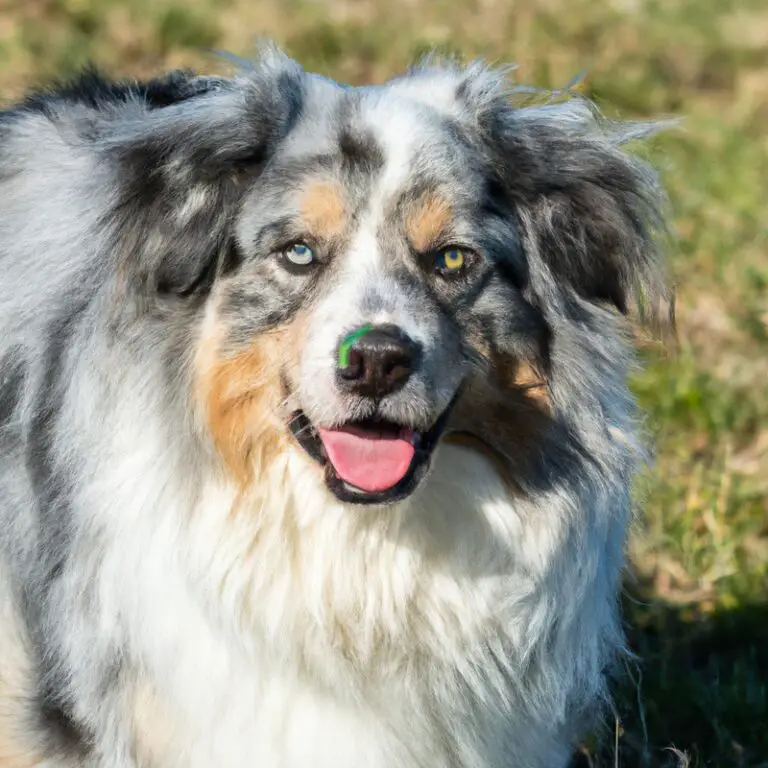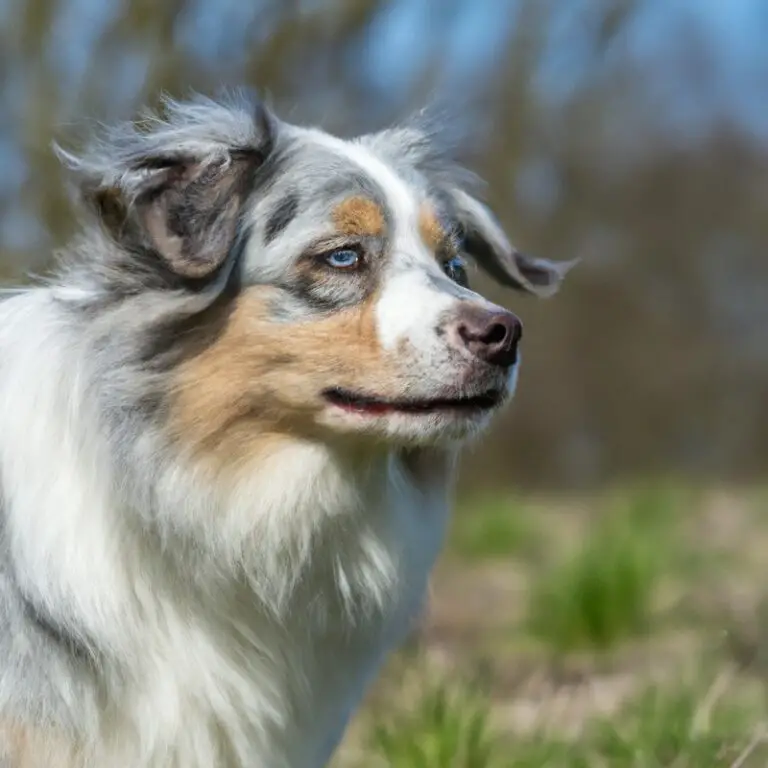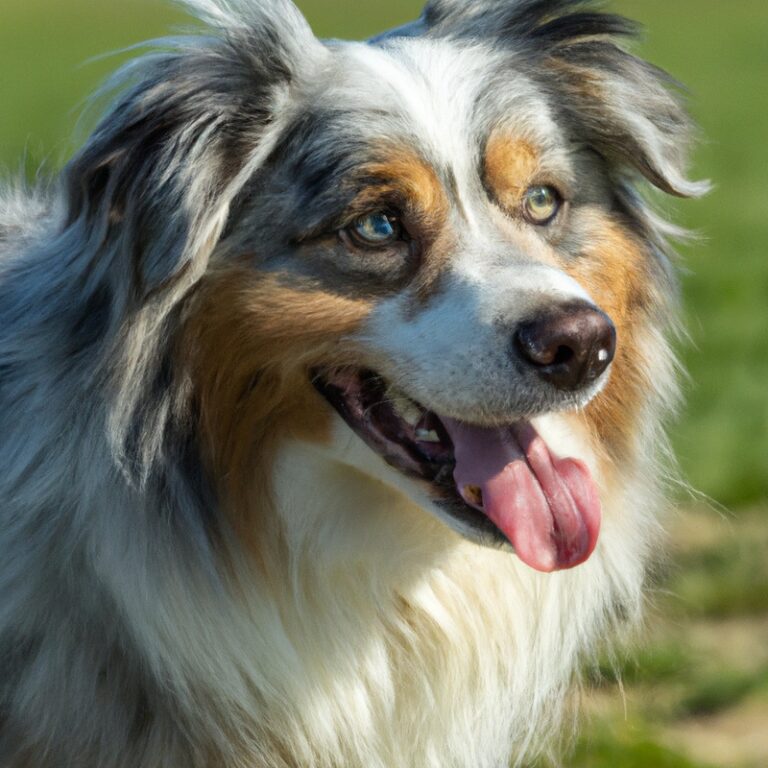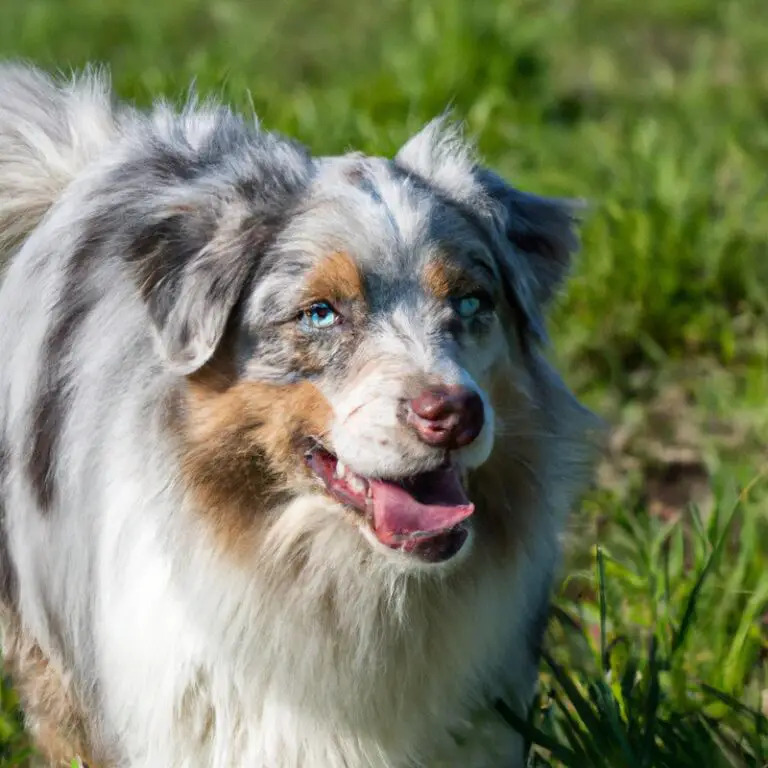How Do Australian Shepherds Handle Being Left Alone In a Yard With Livestock?
Key Takeaways:
- Australian Shepherds have a strong herding instinct and can generally handle being left alone in a yard with livestock.
- Proper training and socialization are essential in ensuring that Australian Shepherds behave appropriately with livestock.
- Providing mental and physical stimulation is vital to prevent boredom and potential behavioral issues in Australian Shepherds left alone with livestock.
- Some Australian Shepherds may require additional supervision or specific training techniques to ensure their safety and the well-being of the livestock in their care.
Have you ever wondered how Australian Shepherds handle the responsibility of being left alone in a yard with livestock? As an expert in dog behavior and training, I can tell you that these remarkable dogs have a natural herding instinct that makes them well-suited for this role.
However, leaving them alone comes with its own set of challenges, including separation anxiety and potential behavioral issues.
In this article, we will delve into the background of Australian Shepherds, discuss the importance of training and socialization, and provide practical tips on how to ensure their safety and happiness in a livestock-filled yard. Stick around to discover alternative options and strategies for dealing with common behavioral issues.
| Australian Shepherds | |
|---|---|
| Temperament | Highly active and intelligent, may become anxious and bored if left alone for extended periods of time |
| Herding Instinct | Strong herding instinct, may attempt to herd or chase livestock if not properly trained |
| Training Needs | Require proper training to avoid unwanted behavior towards livestock and to understand boundaries |
| Exercise Requirements | Need regular exercise and mental stimulation to prevent restlessness or destructive behavior |
| Time Management | May benefit from structured schedule and activities to keep them engaged and prevent boredom |
| Socialization | Proper socialization from an early age can help them better handle being around livestock |
| Supervision | May require supervision when initially introduced to livestock and gradual exposure over time |
| Adaptability | Can adapt to living with livestock if properly trained, supervised, and given appropriate outlets for energy |
The Background of Australian Shepherds and their Role with Livestock
Overview of Australian Shepherds and their Herding Instinct
Australian Shepherds are known for their strong herding instinct. This instinct is deeply ingrained in their DNA, as they were originally bred to work with livestock.
When they see livestock, their instinct kicks in, and they automatically want to gather and control the animals.
This herding instinct manifests in various ways. Australian Shepherds may exhibit behaviors such as chasing, nipping at heels, and barking to move the livestock in a desired direction.
They have a natural ability to anticipate and respond to the movements of livestock, making them effective herding dogs.
It’s important to note that even if Australian Shepherds have not been trained specifically for herding, their instinct can still be quite strong. This means that even if they are left alone in a yard with livestock, they may still try to herd them without proper guidance or training.
Understanding and respecting this herding instinct is crucial when working with Australian Shepherds.
It’s important to provide them with appropriate outlets for their natural herding behaviors, such as engaging in herding or agility activities. Additionally, training and socialization are essential to help channel their instinct in a positive and controlled manner.
So, if you’re considering leaving an Australian Shepherd alone in a yard with livestock, it’s important to take their herding instinct into account.
Ensuring they receive proper training, socialization, and outlets for their natural behaviors will help ensure a successful and harmonious relationship between your dog and the livestock.
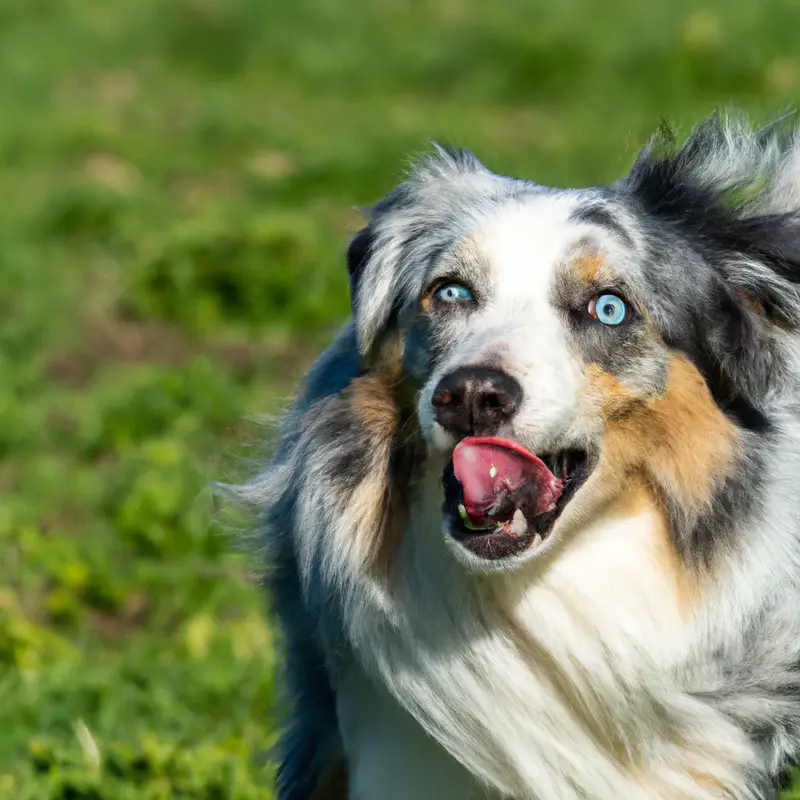
The Importance of Proper Training and Socialization
Proper training and socialization are essential for Australian Shepherds. Training helps them understand commands, boundaries, and expectations, making them well-behaved and obedient.
Socialization ensures that they are comfortable and friendly around people and other animals.
It helps prevent aggression and fear-based behavior. Training and socialization also support the development of their herding instincts, enabling them to work effectively with livestock.
Through positive reinforcement and consistent guidance, Australian Shepherds become well-rounded, confident, and happy companions.
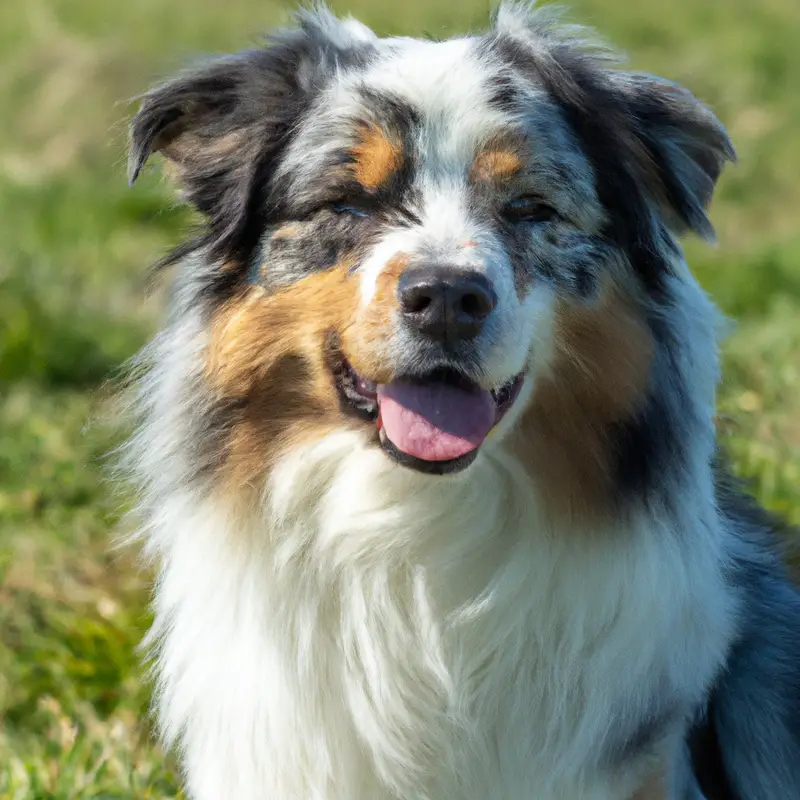
Understanding the Challenges of Leaving Australian Shepherds Alone
Leaving Australian Shepherds alone can present some challenges. These dogs are known for their high energy levels and need for mental stimulation.
Without proper exercise and attention, they may become bored and anxious.
Australian Shepherds are also prone to separation anxiety, which can manifest in destructive behaviors. It’s important to provide them with a safe and secure environment, and to address their mental and physical needs.
Monitoring and interacting with them using technology can help alleviate some of the challenges.
Additionally, exploring alternative options, such as hiring a professional dog walker or enrolling them in daycare or playgroups, can provide social interaction that Australian Shepherds crave. Understanding the challenges of leaving Australian Shepherds alone is crucial in ensuring their well-being and happiness.
Tips for Leaving Australian Shepherds Alone in a Yard with Livestock
Providing Mental Stimulation and Physical Exercise
To keep Australian Shepherds happy and well-behaved when left alone in a yard with livestock, it’s important to provide them with mental stimulation and physical exercise. These energetic and intelligent dogs thrive on activities that challenge their minds and bodies.
For mental stimulation, you can engage them in puzzle toys, obedience training, and interactive games.
These activities keep their brains active and prevent them from getting bored or anxious. Teaching them new tricks and commands also provides mental stimulation while strengthening the bond between you and your dog.
In terms of physical exercise, Australian Shepherds require plenty of daily activity to burn off their energy.
Regular walks, jogging, or hikes are essential. Additionally, playing fetch, participating in agility training, or setting up an obstacle course in your yard can provide the physical workout they need.
It’s crucial to set aside dedicated time each day for mental and physical activities with your Australian Shepherd.
Aim to provide a mix of both throughout the day to keep them mentally engaged and physically exhausted. A tired dog is a happy dog and less likely to engage in destructive behaviors.
Remember, a tired and mentally stimulated Australian Shepherd is more likely to be calm and content when left alone in a yard with livestock.
By prioritizing their mental and physical well-being, you can help ensure a harmonious and enjoyable environment for both your dog and your livestock.
Using Technology to Monitor and Interact with your Australian Shepherd
Want to keep an eye on your Australian Shepherd and interact with them even when you’re not around? Technology can help! There are various devices and apps available that allow you to monitor and communicate with your dog remotely.
- Security Cameras: Install security cameras in your yard and home to keep an eye on your Australian Shepherd. This way, you can see if they’re interacting properly with the livestock or if any issues arise.
- Dog Monitoring Cameras: Specialized dog monitoring cameras, like Furbo or Petcube, offer features such as two-way audio, treat dispensing, and even night vision. You can check in on your Australian Shepherd and talk to them whenever you want, providing comfort and reassurance.
- GPS Collars: Consider getting a GPS collar for your Australian Shepherd. These collars allow you to track your dog’s location in real-time, which can be especially helpful if they are prone to wandering or if you need to ensure they stay within a specific area.
- Remote Training Devices: Remote training devices, like remote training collars, can be used to give your dog commands or corrections even from a distance. This can help reinforce training and ensure your Australian Shepherd understands and follows your directions when working with livestock.
- Interactive Toys and Treat Dispensers: There are interactive toys and treat dispensers available that you can control remotely using your smartphone. These toys can keep your dog entertained and mentally stimulated, even when you’re not physically present.
By utilizing technology to monitor and interact with your Australian Shepherd, you can ensure their safety and well-being, maintain their training, and provide them with mental stimulation. It’s important to find the right devices that suit your needs and your dog’s temperament.
Remember to use technology as a tool to enhance your bond with your dog, rather than a substitute for physical interaction and care.

Alternative Options to Leaving Australian Shepherds Alone in a Yard with Livestock
Hiring a Professional Dog Walker or Pet Sitter
Hiring a professional dog walker or pet sitter is a great option when you need to leave your Australian Shepherd alone in a yard with livestock. They can provide your dog with the exercise, companionship, and care they need while you’re away.
A professional dog walker can take your dog on regular walks and provide mental stimulation, helping to prevent boredom and destructive behavior.
A pet sitter can stay with your dog, ensuring they have company and attention throughout the day. This can also be beneficial for your dog’s socialization and overall well-being.
When hiring a dog walker or pet sitter, make sure to find someone experienced with Australian Shepherds and knowledgeable about their needs.
It’s important to communicate your expectations and provide detailed instructions to ensure your dog receives the proper care. Hiring a professional can give you peace of mind knowing that your Australian Shepherd is in good hands while you’re away.
Enrolling in Daycare or Playgroups for Social Interaction
Enrolling your Australian Shepherd in daycare or playgroups can be a great option for providing them with social interaction. It allows them to interact and play with other dogs, which can help fulfill their need for companionship and exercise.
Daycare and playgroups provide a supervised and controlled environment where your Australian Shepherd can socialize and learn proper behavior with other dogs.
They will have the opportunity to engage in interactive play, participate in group activities, and build positive relationships with other furry friends. By enrolling your Australian Shepherd in daycare or playgroups, you can ensure that they receive the socialization and stimulation they need to stay happy and balanced.
It also helps alleviate their boredom and prevents them from becoming destructive or anxious when left alone for long periods.
When choosing a daycare or playgroup, make sure to do your research and select a reputable facility that prioritizes safety and provides proper supervision. It’s also important to consider the size and activity level of the playgroup, as well as the compatibility of the dogs in the group.
Overall, enrolling your Australian Shepherd in daycare or playgroups can be a wonderful way to promote their socialization, mental stimulation, and overall well-being.
It allows them to interact with other dogs in a controlled environment, providing them with the social interaction they need to thrive.
Exploring Livestock Guardians as Companions for Australian Shepherds
Livestock guardians can be excellent companions for Australian Shepherds, especially when it comes to protecting and herding livestock. These guardians, such as Great Pyrenees or Anatolian Shepherds, are bred specifically to watch over and defend livestock from predators.
Introducing a livestock guardian to an Australian Shepherd can provide several benefits.
Firstly, the guardian’s presence can help alleviate the Australian Shepherd’s intense herding instinct. Livestock guardians have a calm and steady demeanor, which can help balance out the Australian Shepherd’s high energy levels.
Secondly, livestock guardians are highly protective of their charges, providing an extra layer of security.
With a guardian by their side, Australian Shepherds can focus on their herding duties while the guardian keeps predators at bay. Thirdly, the companionship between a livestock guardian and an Australian Shepherd can enrich both dogs’ lives.
They can form a strong bond and keep each other company during long days out in the field.
It is important, however, to properly introduce and socialize the dogs before leaving them alone together. Monitor their interactions carefully and ensure that both dogs are comfortable with each other.
Common Behavioral Issues and Solutions
Separation Anxiety and Coping Strategies
Separation anxiety is a common issue in Australian Shepherds when they are left alone. They can become distressed and exhibit undesirable behaviors like excessive barking, destructive chewing, and even attempts to escape.
Coping strategies can help alleviate their anxiety and create a more positive experience for them.
Here are some coping strategies to help your Australian Shepherd with separation anxiety:
- Gradual desensitization: Start by leaving your dog alone for short periods, gradually increasing the time. This will help them become accustomed to being alone and reduce their anxiety.
- Create a safe space: Designate a comfortable area in your yard for your Australian Shepherd with access to shelter, water, and toys. Creating a safe and secure environment can help alleviate anxiety.
- Provide mental stimulation: Engage your dog’s mind with interactive toys or puzzle feeders. Mental stimulation can help redirect their focus and provide a positive distraction from separation anxiety.
- Regular exercise: Ensure your Australian Shepherd receives enough physical exercise to release energy. Regular exercise can help reduce anxiety levels and promote overall well-being.
- Consider crate training: Introduce your dog to a crate as a safe and calming space. It can become their den, providing them with a sense of security when you’re not around.
- Calming aids: Some dogs benefit from natural calming aids like pheromone diffusers or supplements. Consult with your veterinarian to determine if these options are suitable for your Australian Shepherd.
- Seek professional help: If your Australian Shepherd’s separation anxiety persists or worsens, consult a professional dog trainer or animal behaviorist. They can provide personalized strategies to address your dog’s specific needs.
Remember, every dog is unique, and it may take time to find the right coping strategies for your Australian Shepherd. Patience, consistency, and positive reinforcement will be key in helping them overcome separation anxiety and feel more comfortable when left alone in a yard with livestock.
Excessive Barking and How to Address it
Excessive barking is a common issue that Australian Shepherds may exhibit. To address this behavior, it’s important to understand the underlying reasons for their barking.
Australian Shepherds are intelligent and active dogs, and excessive barking is often a result of boredom, anxiety, or the need for attention.
Here are some effective ways to address excessive barking in Australian Shepherds:
1. Provide mental and physical stimulation:
– Engage your Australian Shepherd in activities such as puzzle toys, agility training, or obedience training to keep their mind occupied. – Ensure they receive adequate exercise through daily walks, runs, or play sessions.
A tired dog is less likely to bark excessively.
2. Proper socialization and training:
– Socialize your Australian Shepherd from an early age, exposing them to various environments, people, and animals. – Enroll them in obedience training classes to establish clear communication and boundaries.
This will help them understand when barking is appropriate and when it’s not.
3. Identify the triggers:
– Monitor your Australian Shepherd’s behavior to determine what triggers their excessive barking. – Once you understand the specific triggers, work on desensitizing and counter-conditioning them to reduce barking in those situations.
4. Use positive reinforcement:
– Reward your Australian Shepherd for calm and quiet behavior. – When they bark excessively, redirect their attention to a more appropriate behavior, such as sitting or lying down.
Reward them for this calm behavior.
5. Consult a professional:
– If excessive barking persists despite your efforts, consider consulting a professional dog trainer or behaviorist. – They can assess the underlying causes of the barking and provide tailored guidance and techniques to address the behavior.
Remember, consistency and patience are key when addressing excessive barking.
With time, training, and proper stimulation, you can help your Australian Shepherd become a well-behaved and quieter companion.
Aggression towards Livestock and Training Techniques
Aggression towards livestock can be a concerning behavior in Australian Shepherds. To address this issue, training techniques can be implemented.
Building a strong foundation of obedience and establishing clear boundaries is essential.
Positive reinforcement methods, such as reward-based training, can be effective. Gradual exposure to livestock in controlled environments can also be helpful.
Consistency, patience, and professional guidance are key in addressing this aggression.
It’s important to remember that every dog is unique, and training methods may vary. Seeking the help of a professional dog trainer or behaviorist can provide additional support and guidance.
Final Verdict
Australian Shepherds can handle being left alone in a yard with livestock, but it requires proper training, socialization, and a safe environment. It’s important to provide mental stimulation, physical exercise, and use technology to monitor and interact with them.
However, alternative options such as hiring a dog walker, enrolling in daycare, or considering livestock guardians can also be beneficial.
Lastly, addressing common behavioral issues like separation anxiety, excessive barking, and aggression towards livestock requires patience, understanding, and consistent training. Overall, Australian Shepherds can thrive in a yard with livestock when their needs are met and they receive the proper care and attention.

